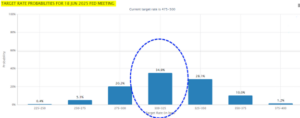Takeaways from the Road
September 26, 2024
To Inform:
Earlier this week, members of The Joseph Group Investment Strategy Team (Alex Durbin, Jake Lindaberry, and Travis Upton) attended a mini conference at the JP Morgan Complex in Polaris, outside of downtown Columbus. The conference included presentations from fund managers and other investment professions focused on the bond market. We came back with three main takeaways:
The Active ETF Landscape is Growing Exponentially.
Mutual funds and exchange traded funds (ETFs) are both ways to gain access to a diversified portfolio of investments (i.e., a stock fund or bond fund). However, mutual funds only trade once per day (they are priced at the end of the day) while ETFs trade throughout the day like a stock. In addition, ETFs often have lower internal expenses and sometimes may be more tax efficient when compared to mutual funds. The opening speaker of the conference talked about how more active strategies are being offered in an ETF format, and the active (as opposed to passive or index) ETF landscape is growing exponentially.
Why is this important? Currently, many of the objective-based portfolios we have the privilege of managing for clients consist of both mutual funds and ETFs. Recently, our research efforts are including more active ETFs as the marketplace offers more opportunities. As we head into 2025, we fully expect client portfolios to include a higher proportion of ETFs (as compared to mutual funds) as the marketplace shifts to offer more choices for investors.
When the Fed is Cutting Rates, the Historical Playbook Suggests ABC…Anything But Cash.
JPMorgan recently released a paper with their 4th quarter views on bonds and one of the subheadings was “The ABC’s of easing cycles: Anything But Cash.” According to the paper, as the rates paid by cash alternatives such as money markets or CD’s fall alongside Fed rate cuts, history shows investors are better off owning bonds than cash.
A speaker at the conference referenced the slide below showing peak CD rates after the Fed was done increasing rates, and then subsequent returns across different asset classes 12 months later. Looking at different historical time periods, the result was the same, stocks, bonds, and balanced portfolios all outperformed CDs during the subsequent 12 months. If history repeats itself, ABC, or anything but cash, may be important to achieving investment success.

Source: JPMorgan Guide to the Markets
Markets May Not Be Considering The New President’s Policies When Pricing in Fed Cuts.
As of September 26, the market is pricing in seven to eight rate cuts of 0.25% between now and June. In other words, if current market pricing is correct, the Fed Funds rate, which is currently at an upper band of 5% after last week’s 0.50% cut, would be at 3.25% by next June (see chart below).

Source: CME FedWatch as of 9/26/2024
Andrew Norelli, a portfolio manager with JPMorgan, suggested the market may not be considering potential policy changes which may come from the new President – regardless of who is elected. According to Norelli, when you look at potential policy shifts such as student loan debt relief, tariffs, price controls, and tax cuts, most of them tend to be inflationary. Notice the policies we listed here include both Democratic and Republican proposed policies. The bottom line – regardless of who is elected, policy may be stimulative to inflation, and rates may not go down as fast as the market currently thinks it will.
Getting out and sharing ideas with other smart investors is one way The Joseph Group seeks to grow in excellence – we strive to avoid complacency and seek to make things (and ourselves) better. Learning from others, and testing the market’s common knowledge, is one way we seek to make things better for our clients.

Written by Travis Upton, Partner & Chief Executive Officer